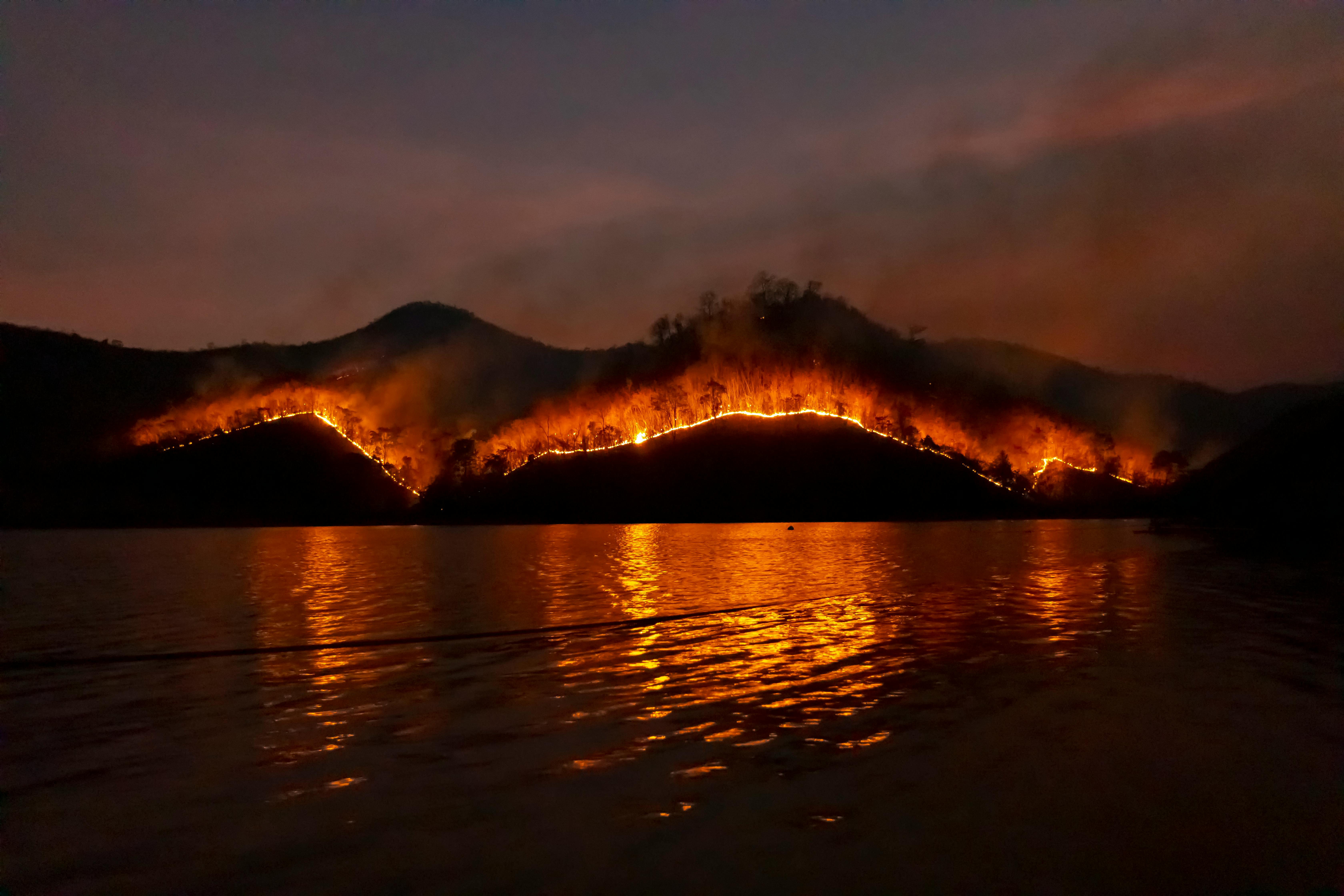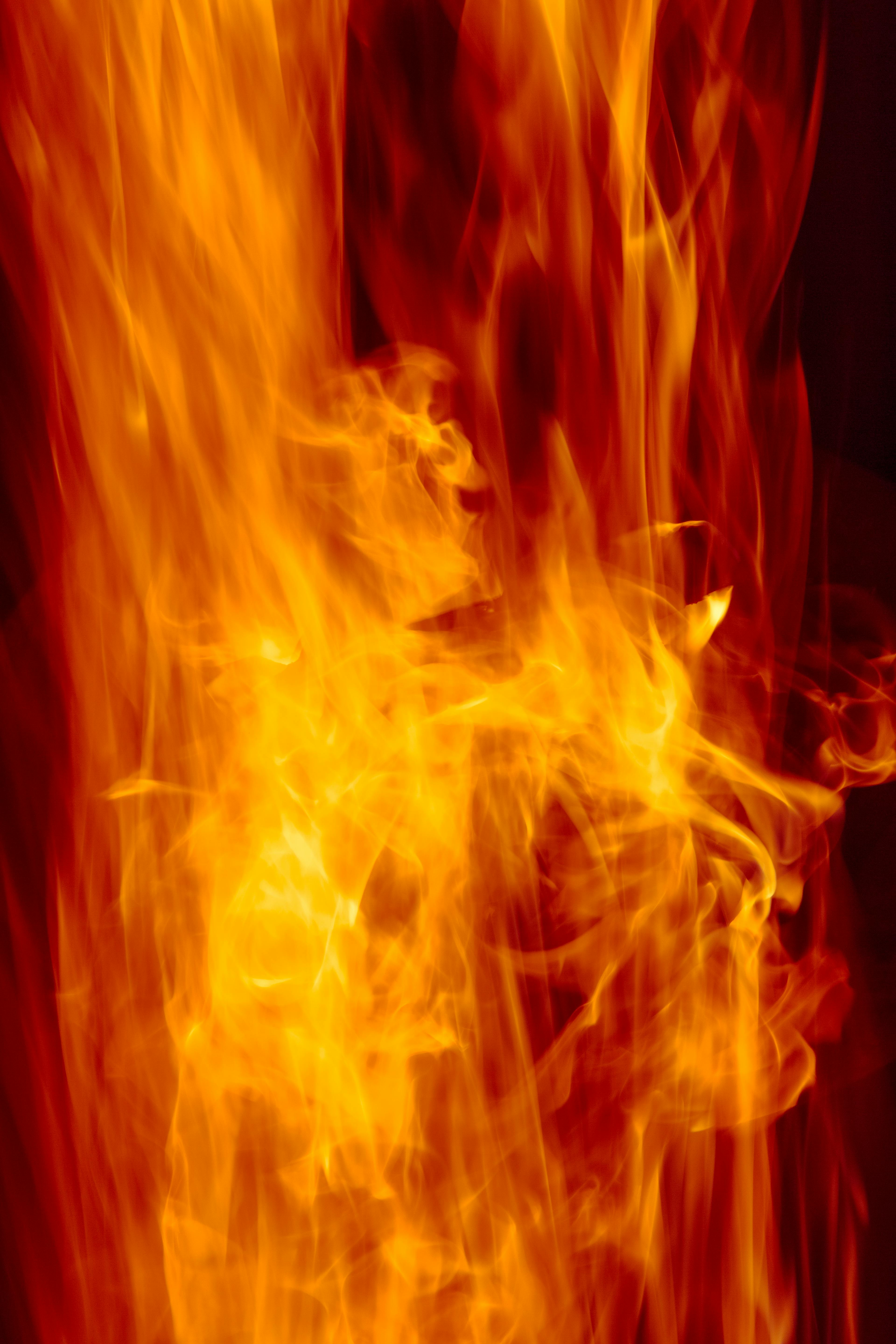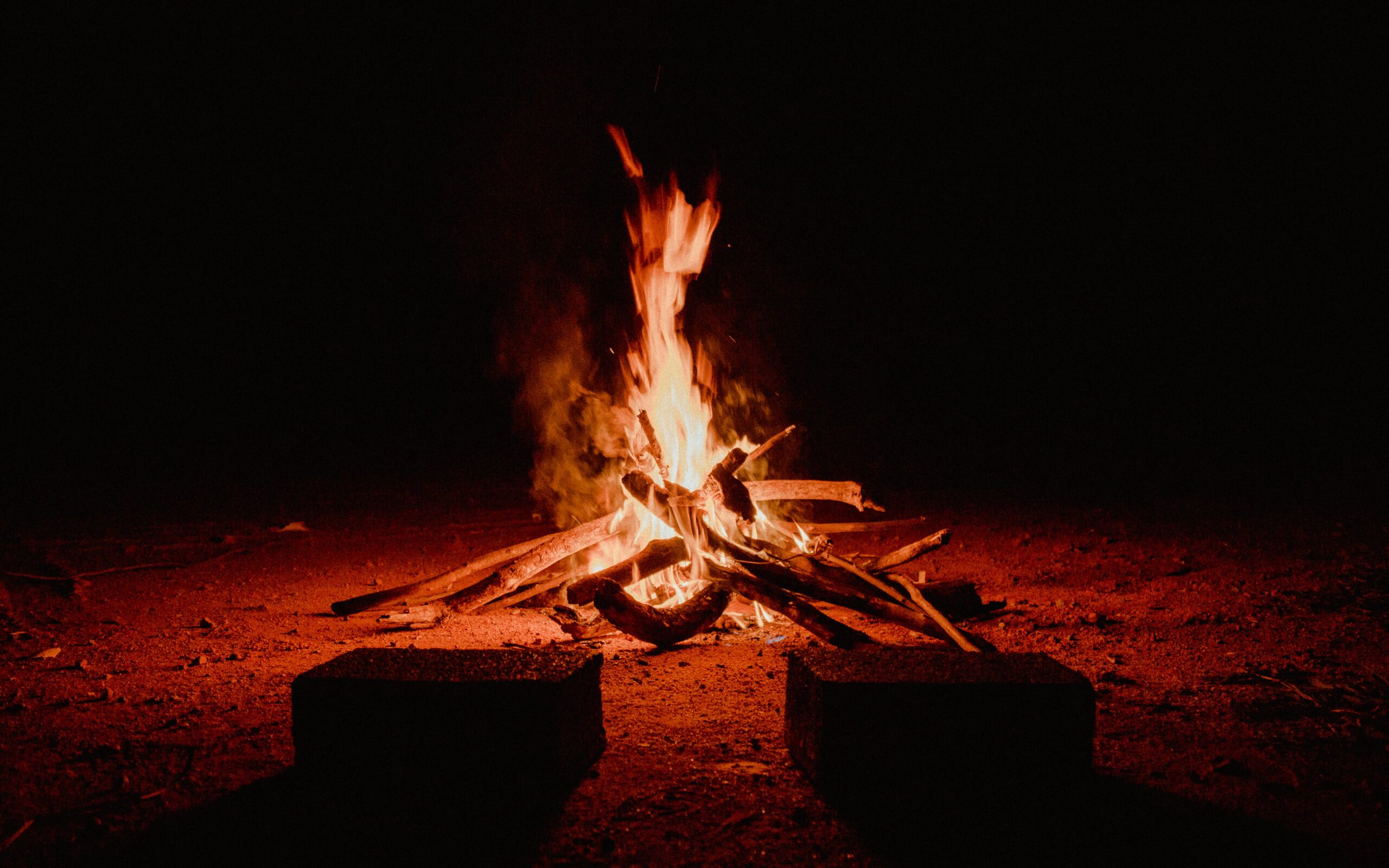Are you prepared for the threat of wildfires? Creating a comprehensive wildfire safety plan is crucial for safeguarding your property and loved ones in the face of this natural disaster. This article will provide you with essential tips and guidelines to develop an effective plan that includes prevention measures, evacuation procedures, and communication strategies. Don’t wait until it’s too late – equip yourself with the knowledge and tools necessary to protect what matters most.

Education and Awareness
Promoting Fire Safety Education in Local Communities
Promoting fire safety education in local communities is crucial in preventing and mitigating the risks associated with wildfires. By raising awareness and providing essential information, we can empower individuals to take proactive measures to protect themselves, their homes, and their communities. This can be achieved through various means, such as distributing educational materials, conducting workshops and training programs, and organizing community events centered around fire safety. By engaging with residents and imparting knowledge on fire prevention methods, the importance of early detection, and appropriate response actions, we can foster a culture of fire safety that will benefit everyone.
Creating Public Awareness Campaigns
Public awareness campaigns play a vital role in educating and informing the public about the risks and dangers of wildfires. These campaigns utilize various channels, such as social media, radio, television, and community outreach programs, to disseminate information on fire prevention methods, evacuation procedures, and resources available in case of emergency. Through eye-catching visuals, engaging messages, and relatable stories, these campaigns aim to grab the attention of individuals and inspire them to take the necessary actions to protect themselves and their communities. Furthermore, public awareness campaigns can also address specific issues, such as the impact of human activities on starting wildfires, the importance of reporting suspicious activities, and the need for responsible behavior in fire-prone areas.
Providing Information on Wildfire Risks and Prevention Methods
One of the key aspects of wildfire safety is providing comprehensive information on wildfire risks and prevention methods. This information should be easily accessible to the public and cover a wide range of topics, including understanding wildfire behavior, recognizing high-risk areas, creating defensible spaces, and utilizing fire-resistant materials. By equipping individuals with this knowledge, they can make informed decisions when it comes to protecting themselves and their properties. Information resources can be made available through websites, brochures, community forums, and educational programs, ensuring that individuals have the necessary tools to mitigate the risks associated with wildfires.
Conducting Fire Safety Workshops and Training Programs
To ensure that individuals are well-prepared and capable of responding effectively to wildfire incidents, conducting fire safety workshops and training programs is essential. These workshops can cover a wide range of topics, including fire extinguisher usage, evacuation procedures, first aid techniques, and basic firefighting skills. By providing hands-on training and simulations, individuals can gain practical experience and confidence in handling emergency situations. Additionally, these workshops can also educate participants on the importance of early detection and reporting, as well as the significance of collaboration between community members and emergency services. Through these programs, individuals can develop a sense of responsibility and become actively involved in their own safety and the safety of their communities.
Fuel Management
Implementing Fuel Breaks and Firebreaks
Implementing fuel breaks and firebreaks is a fundamental component of effective fuel management. These physical barriers create an interruption in the continuity of vegetation, reducing the likelihood of fire spreading from one area to another. Fuel breaks are typically wider areas where vegetation is minimized or controlled, while firebreaks are strips of land that act as a barrier to slow down or stop the progression of wildfires. By strategically implementing and maintaining these breaks, the spread of fires can be controlled, giving firefighters a better chance at containment and suppression efforts.
Clearing Vegetation Near High-Risk Areas
Clearing vegetation near high-risk areas is an essential proactive measure in reducing the likelihood of wildfires and their intensity. This can involve removing dead or dying vegetation, thinning dense areas, and managing the fuel load within the vicinity of homes and infrastructure. By creating defensible spaces through vegetation clearance, the risk of wildfires reaching structures is significantly reduced, allowing for safer evacuation and better firefighting conditions.
Utilizing Prescribed Burns
Prescribed burns, also known as controlled burns, are planned fires intentionally set under specific conditions and managed by experienced professionals. These controlled burns serve several purposes in fuel management. Firstly, they reduce the accumulation of flammable materials, such as dry leaves, branches, and grasses, which can fuel wildfires. Secondly, they promote the rejuvenation and overall health of ecosystems by eliminating invasive species and stimulating the growth of native vegetation. Prescribed burns can also help mitigate the impact of future wildfires by reducing the amount of available fuel, thus decreasing the intensity and severity of fires.
Removal of Hazardous Fuels
The removal of hazardous fuels is a critical step in minimizing the risk of wildfires and protecting communities. Hazardous fuels can include dead trees, fallen branches, dense vegetation, and other flammable materials that can potentially fuel a wildfire. By identifying and removing these fuels, especially in areas close to infrastructure and high-risk zones, we can decrease the chances of ignition and slow down the spread of fires. Removal of hazardous fuels can be done through manual labor, mechanical methods, or a combination of both, depending on the specific needs and conditions of each area.
Regular Fuel Reduction Activities
In order to maintain effective fuel management, regular fuel reduction activities are necessary. These activities can include ongoing vegetation maintenance, periodic fuel breaks and firebreaks maintenance, and proactive assessments of high-risk areas. By consistently monitoring and managing the fuel load and vegetation density, communities can mitigate the risks posed by wildfires. Regular fuel reduction activities also ensure that existing fuel breaks and firebreaks remain effective and serve their intended purpose in protecting lives and properties.
Early Detection and Reporting
Installation and Regular Maintenance of Fire Detection Systems
Early detection of wildfires is key to minimizing the potential damage they can cause. Installing fire detection systems, such as remote sensing technologies, thermal cameras, and smoke detectors, can greatly improve the chances of detecting wildfires in their early stages. Regular maintenance and testing of these systems are necessary to ensure their proper functioning at all times. By investing in advanced fire detection technology and actively monitoring these systems, communities can swiftly respond to emerging wildfire threats, leading to faster containment and reduced potential for devastation.
Engaging Community Members in Reporting Suspicious Activities
Community members play a crucial role in early detection and reporting of wildfires. By encouraging individuals to be vigilant and report any suspicious activities or signs of fire, communities can act proactively to prevent the spread of wildfires. Establishing communication channels, such as dedicated hotlines or online reporting platforms, can streamline the reporting process and ensure that information reaches the appropriate authorities swiftly. Public awareness campaigns can also educate community members on the significance of reporting suspicious activities and emphasize the collective responsibility for wildfire prevention and detection.
Training Firefighters and Local Authorities in Early Fire Detection
Training firefighters and local authorities in early fire detection techniques prepares them to respond swiftly and effectively to emerging wildfire incidents. These trainings can include instruction on recognizing fire behavior indicators, utilizing specialized equipment, and implementing coordinated response strategies. By investing in continuous training and providing access to the latest firefighting technology, communities can equip their first responders with the skills and tools needed to identify wildfires in their early stages, improving overall emergency response efforts and reducing fire-related damages.
Establishment of Fire Watch Programs
Establishing fire watch programs can greatly enhance early detection capabilities within communities. Fire watch programs involve trained volunteers who actively patrol high-risk areas and report any signs of fire or suspicious activities to the appropriate authorities. These programs not only serve as an additional layer of surveillance but also foster community engagement and ownership in wildfire prevention. By working closely with firefighters and local authorities, fire watch volunteers contribute to the collective effort in protecting lives, homes, and natural resources from the devastating impacts of wildfires.
Emergency Preparedness
Developing Emergency Response Plans
Developing comprehensive emergency response plans is essential in minimizing the impacts of wildfires on communities. These plans should outline clear protocols and procedures for different emergency scenarios, including evacuation measures, communication strategies, resource allocation, and coordination between various response agencies. Emergency response plans should be regularly reviewed, updated, and communicated to all relevant stakeholders to ensure their effectiveness during critical situations. By having a well-defined and practiced plan in place, communities can respond efficiently and effectively during wildfire events, protecting lives and minimizing property damage.
Conducting Drills and Exercises
Regular drills and exercises are invaluable in testing and refining emergency response plans. These drills simulate realistic wildfire scenarios and allow emergency responders, community members, and relevant organizations to practice their roles and responsibilities. By conducting these exercises, communities can identify gaps or areas for improvement in their emergency response plans, discover potential communication issues, and strengthen overall collaboration. Regularly scheduled drills and exercises also help familiarize individuals with evacuation routes, assembly points, and emergency shelters, increasing overall preparedness and reducing panic during actual wildfire events.
Ensuring Adequate Resources for Response and Support
Having adequate resources available during wildfire events is critical for effective response and support efforts. This includes an adequate number of firefighting personnel, firefighting equipment, emergency vehicles, and supplies. Additionally, communities must have access to sufficient resources for evacuations, such as temporary shelters, food, water, and medical support. By having these resources readily available and regularly reviewed, communities can ensure a timely and coordinated response to wildfires, saving lives and minimizing the impact of these natural disasters.
Collaborating with Emergency Management Agencies
Collaboration with emergency management agencies is crucial in developing and implementing effective emergency response plans. These agencies have expertise in disaster management and can provide valuable guidance to communities in their wildfire preparedness efforts. By exchanging knowledge and resources, communities can benefit from best practices and lessons learned from past incidents. Collaborating closely with emergency management agencies also ensures that communities are informed about the latest wildfire response protocols and have access to the necessary support systems during emergencies.
Establishing Emergency Communication Channels
Establishing reliable communication channels is vital for effective emergency response during wildfires. Communities should establish multiple channels for communication, including emergency radio frequencies, text message alerts, social media platforms, and public address systems. These channels should be regularly tested and well-publicized to ensure that community members are aware of how to receive and share critical information during emergencies. By establishing clear and accessible communication channels, communities can disseminate evacuation orders, provide updates on the wildfire situation, and address any urgent needs or concerns in a timely manner.

Evacuation Planning
Identifying Evacuation Routes
Identifying and mapping evacuation routes is a critical component of wildfire evacuation planning. Communities should conduct thorough assessments to determine the most efficient and safe routes for evacuating residents from high-risk areas. These routes should consider factors such as road capacity, accessibility, potential bottlenecks, and alternate options in case of closures or obstructions. Evacuation routes should be clearly marked and regularly maintained to ensure visibility and ease of navigation during emergencies. By providing clear and well-defined evacuation routes, communities can facilitate the safe and timely evacuation of residents in wildfire-prone areas.
Establishing Evacuation Centers
Establishing evacuation centers is essential in providing temporary shelter, basic necessities, and support services to evacuees during wildfires. These centers should be strategically located outside of high-risk areas and equipped with adequate facilities, including sleeping arrangements, sanitation facilities, food, water, and medical support. Community members should be informed of the locations and functions of these centers in advance, through public education campaigns and regular community briefings. By establishing well-equipped and well-staffed evacuation centers, communities can ensure the safety and well-being of individuals displaced by wildfires.
Communicating Evacuation Orders and Procedures
Effectively communicating evacuation orders and procedures is crucial in ensuring that community members understand the urgency of the situation and how to respond appropriately. Evacuation orders should be clear, concise, and easily understood, providing specific guidance on evacuation routes, assembly points, and alternate options for those with special needs. Communities should utilize multiple communication channels, such as emergency alerts, sirens, social media, and door-to-door notifications, to reach as many residents as possible. By providing timely and accurate information about evacuation orders and procedures, communities can maximize the safety of individuals and minimize confusion during wildfire events.
Providing Special Needs Assistance
It is important to consider the needs of individuals with special requirements during evacuations. Communities should have plans in place to provide assistance to those with mobility issues, medical conditions, or other specific needs. This may involve pre-identifying individuals who may require additional support, establishing protocols to ensure their safety during evacuations, and providing specialized transportation or medical services as necessary. By addressing the unique needs of vulnerable populations, communities can ensure that no one is left behind during wildfire evacuations and support the overall inclusivity and safety of all residents.
Coordinating with Transportation Agencies for Evacuation
Coordinating with transportation agencies is essential in facilitating smooth and efficient evacuations during wildfires. Communities should collaborate closely with local transportation authorities to develop evacuation plans that consider the capacity, availability, and routes of public transportation systems. In the event of large-scale evacuations, the coordination between local authorities, transportation agencies, and emergency management organizations becomes critical to ensure appropriate allocation of resources and efficient movement of people. By establishing strong partnerships with transportation agencies, communities can optimize evacuation processes, minimize congestion, and expedite evacuations, ultimately saving lives and reducing the risks associated with wildfires.
Community Collaboration
Engaging Local Community Organizations in Fire Safety Efforts
Engaging local community organizations in fire safety efforts is crucial for building a united and resilient approach to wildfire prevention and response. Community organizations, such as homeowners associations, youth groups, neighborhood watch programs, and environmental clubs, can play a vital role in disseminating fire safety information, organizing awareness campaigns, and mobilizing community members for volunteer efforts. By forging partnerships with these organizations, communities can harness local knowledge, resources, and networks to augment their wildfire safety initiatives, creating a more connected and empowered community.
Creating Neighborhood Preparedness Groups
Creating neighborhood preparedness groups fosters a sense of collective responsibility and encourages community members to actively participate in wildfire safety efforts. These groups can be formed within specific neighborhoods or communities, bringing together residents to discuss and implement fire prevention measures, share information, and collaborate on emergency response plans. Neighborhood preparedness groups can organize regular meetings, training sessions, and drills to enhance the readiness and cohesion of the community. By creating a culture of preparedness at the neighborhood level, communities can establish a strong foundation for effective wildfire prevention and response efforts.
Encouraging Public-Private Partnerships
Public-private partnerships are valuable in pooling resources, expertise, and engagement towards wildfire safety. By fostering collaboration between government entities, private businesses, non-profit organizations, and community members, communities can access a broader range of resources and expertise, resulting in more robust fire prevention programs. Public-private partnerships can support initiatives such as funding fire prevention research, implementing public awareness campaigns, sponsoring training programs, and providing equipment and resources for emergency response. By actively promoting and nurturing these partnerships, communities can enhance their capacity to mitigate the risks of wildfires and create a more resilient environment for all.
Sharing Resources and Expertise
Sharing resources and expertise among communities can be immensely valuable in wildfire safety efforts. Community organizations, emergency services, and government agencies can establish networks and platforms for sharing best practices, lessons learned, and innovative strategies. This can include knowledge sharing events, online forums, and resource libraries. By facilitating the exchange of information, communities can learn from each other’s successes and challenges, accelerate the implementation of effective practices, and promote a collective spirit of collaboration and improvement. Sharing resources and expertise ultimately strengthens the overall wildfire safety strategies and resilience of communities.

Building and Infrastructure Regulations
Enforcing Fire-Resistant Building Codes and Standards
Enforcing fire-resistant building codes and standards is essential in reducing the vulnerability of structures to wildfires. These codes and standards outline construction guidelines, materials, and techniques that enhance the fire resistance of buildings. By strictly enforcing these regulations, communities can ensure that new constructions and renovations adhere to the highest fire safety standards. This includes requirements for fire-resistant roofing materials, siding, windows, vents, and other architectural features. Enforcing fire-resistant building codes and standards not only protects individual properties but also contributes to overall community resilience in the face of wildfire events.
Promoting the Use of Fire-Safe Materials
Promoting the use of fire-safe materials in building construction and landscaping can significantly reduce the risk of wildfires. Communities should educate residents, contractors, and developers on the importance of choosing fire-resistant materials, such as non-combustible roofing, decks, and fences. Additionally, encouraging the use of fire-safe landscaping practices, such as selecting fire-resistant plants and creating defensible spaces, can further enhance the protection of structures. By promoting the use of fire-safe materials and landscaping, communities can create a built environment that is better able to withstand wildfires and minimize potential damages.
Establishing Clearance Requirements around Buildings
Establishing clearance requirements around buildings is crucial in reducing the risk of wildfire damage. Communities should implement guidelines that specify the distance at which vegetation should be cleared from structures, commonly known as defensible space. These clearance requirements help create a buffer zone that reduces the risk of ignition and slows down the spread of wildfires. Adequate clearance distances should be determined based on local conditions, such as vegetation types, slope, and prevailing wind patterns. By enforcing clearance requirements, communities can improve the chances of structures surviving wildfires and reduce the overall impact on lives and properties.
Updating Infrastructure to Facilitate Wildfire Response
Updating infrastructure to facilitate wildfire response is of utmost importance. This includes ensuring access to water sources for firefighting purposes, improving road networks to accommodate emergency vehicles, and establishing communication systems that remain robust during emergencies. Communities should conduct regular assessments of their existing infrastructure, identifying areas that may hinder wildfire response efforts or pose safety risks. By investing in necessary infrastructure upgrades and maintenance, communities can enhance their capacity to respond to wildfire events, supporting the effective deployment of firefighting resources and ensuring the safety of residents and responders.
Vegetation and Landscape Management
Developing Vegetation Management Guidelines
Developing vegetation management guidelines is essential in regulating land use practices and reducing vegetation-related risks. These guidelines should provide specific recommendations for maintaining vegetation in a manner that minimizes the likelihood of wildfires. This can include guidance on pruning trees, managing ground cover, and controlling invasive plant species. Vegetation management guidelines may also address the importance of native plant species that are better adapted to fire-prone ecosystems. By developing and enforcing these guidelines, communities can promote responsible land management practices and reduce the likelihood of wildfires spreading and causing extensive damage.
Promoting Fire-Resistant Landscaping Practices
Promoting fire-resistant landscaping practices empowers individuals to create landscapes that are less susceptible to wildfires. Communities should educate residents on the importance of choosing fire-resistant plants, proper spacing, and appropriate irrigation techniques. Fire-resistant landscaping practices may also include hardscaping features, such as gravel pathways or brick patios, that can act as firebreaks. By promoting fire-resistant landscaping, communities can help mitigate the risks associated with wildfires and create safer environments for residents and their properties.
Encouraging Proper Tree Maintenance
Encouraging proper tree maintenance is crucial in reducing the risk of wildfires caused by falling branches or excessive dead vegetation. Communities should educate residents on the importance of regular tree inspections, removal of dead or diseased branches, and appropriate pruning techniques. Proper tree maintenance not only minimizes the risk of ignition but also supports tree health and resilience to natural disturbances, such as wildfires. By promoting responsible tree care practices, communities can enhance their overall wildfire safety efforts and protect their valuable tree resources.
Maintaining Defensible Space
Maintaining defensible space around structures is a critical aspect of wildfire prevention. Communities should provide guidance to residents on creating and maintaining appropriate defensible space within their properties. This typically involves keeping vegetation and flammable materials a safe distance away from structures, such as homes, garages, or outbuildings. By clearing and maintaining defensible space, communities can significantly reduce the risk of structure ignition during wildfires and increase the chances of successful firefighting efforts. Maintaining defensible space is a shared responsibility and contributes to the overall safety and resilience of communities.

Animal Safety and Evacuation
Including Animal Shelters and Evacuation Plans in Emergency Preparedness
Including animal shelters and evacuation plans in emergency preparedness efforts is essential to ensure the safety and well-being of pets and livestock during wildfires. Communities should establish designated animal shelters or safe locations where animals can be temporarily housed and cared for during evacuations. These shelters should have adequate facilities, including veterinary care, food, and water, to support the needs of different types of animals. Additionally, communities must develop evacuation plans that consider the specific requirements for safely transporting and managing animals during emergencies. By recognizing the importance of animal safety and incorporating it into emergency preparedness, communities can help protect the cherished members of their families.
Educating Pet Owners on Fire Safety for Animals
Educating pet owners on fire safety for animals is crucial in ensuring the well-being of pets during wildfires. Communities should provide information on how to include pets in emergency preparedness plans, such as assembling pet evacuation kits, identifying pet-friendly shelters, and ensuring proper identification. Additionally, pet owners should be educated on the signs of stress and illness in animals after a wildfire event, as well as on the resources available for their care and recovery. By raising awareness and providing guidance on fire safety for animals, communities can enhance the resilience of families and their beloved pets in the face of wildfires.
Collaborating with Animal Welfare Organizations
Collaborating with animal welfare organizations is vital in developing effective plans and resources for animal safety during wildfires. These organizations have expertise in animal rescue, care, and support during emergencies. By partnering with local animal shelters, veterinary clinics, and animal rescue groups, communities can access specialized knowledge, networks, and resources that are essential for ensuring the safety and welfare of animals. This collaboration can include joint training exercises, sharing of best practices, and coordinated efforts in emergency response. By working together, communities and animal welfare organizations can create a more compassionate and inclusive approach to wildfire safety.
Establishing Animal Rescue Teams
Establishing dedicated animal rescue teams can greatly enhance the ability of communities to respond to animal-related emergencies during wildfires. These teams, consisting of trained volunteers and professionals, can be mobilized to rescue and provide immediate care for animals in distress. Animal rescue teams should have access to appropriate equipment, such as animal carriers, first aid supplies, and specialized transportation. By establishing animal rescue teams and incorporating them into emergency response plans, communities can ensure a more comprehensive and effective approach to protecting animal lives during wildfires.
Monitoring and Analysis
Deploying Remote Sensing Technologies for Early Fire Detection
Deploying remote sensing technologies, such as satellites and drones, can significantly improve early fire detection capabilities. These technologies can detect heat signatures, smoke plumes, and other indicators of wildfire activity from a distance, allowing for faster response times. By incorporating remote sensing technologies into existing fire detection systems, communities can enhance their ability to detect and respond to wildfires in their early stages, improving containment efforts and reducing the potential for extensive damage. Regular monitoring and analysis of remote sensing data can also contribute to better understanding and prediction of wildfire behavior.
Collecting and Analyzing Wildfire Data
Collecting and analyzing wildfire data is crucial for developing evidence-based strategies and enhancing wildfire prevention and response efforts. Communities should establish systems for collecting data on past wildfires, including their causes, locations, intensity, and impacts. This data can help identify trends, hotspots, and areas of high vulnerability. Additionally, communities can analyze this data to evaluate the effectiveness of their mitigation strategies and make informed decisions on resource allocation and prioritization. By actively collecting and analyzing wildfire data, communities can continuously improve their resilience and knowledge in coping with future wildfire events.
Monitoring Weather Conditions and Fire Behavior
Monitoring weather conditions and fire behavior is critical in predicting and adapting to evolving wildfire situations. Communities should establish weather monitoring stations and systems that provide real-time information on factors that influence fire behavior, such as wind patterns, humidity, and temperature. By monitoring these conditions, communities can anticipate the likelihood of fire ignitions, rapid fire propagation, or extreme fire behavior, allowing for more accurate predictions and timely response actions. Weather monitoring also supports the safety of firefighters and facilitates informed decision-making in resource allocation and evacuation planning.
Evaluating Effectiveness of Fire Mitigation Strategies
Evaluating the effectiveness of fire mitigation strategies is essential to continuously improve wildfire prevention efforts. Communities should conduct regular assessments and evaluations of implemented mitigation measures, such as fuel management activities, education campaigns, and infrastructure upgrades. This evaluation process should consider various indicators, including reductions in wildfire incidents, property damages, and response times. By regularly evaluating the effectiveness of fire mitigation strategies, communities can identify areas for improvement, refine existing approaches, and ensure the allocation of resources to the most effective measures. This continuous improvement process contributes to the overall resilience of communities in the face of wildfires.
By prioritizing education and awareness, implementing proactive fuel management strategies, promoting early detection, strengthening emergency preparedness, planning for evacuations, fostering community collaboration, enforcing building regulations, implementing effective vegetation management practices, ensuring animal safety and evacuation, monitoring and analyzing fire data, and constantly evaluating and refining strategies, communities can enhance their resilience to wildfires. With a comprehensive approach that integrates multiple strategies and engages all stakeholders, communities can better protect lives, homes, and natural resources from the devastating impacts of wildfires. Safeguarding our communities against wildfires requires a collective effort, and by working together, we can create safer environments and foster a culture of wildfire safety.






